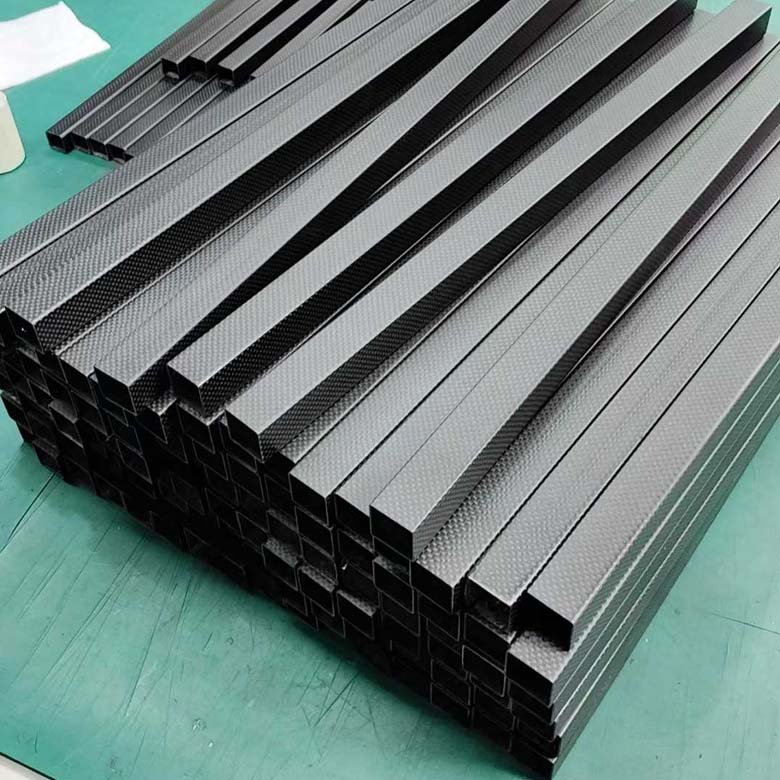What Is Aerospace-Grade Carbon Fiber Square Tube and Why It Matters
At first glance, a carbon fiber square tube looks like any lightweight structural component. But there’s a huge difference hiding beneath that glossy surface. Especially in aerospace-grade carbon fiber square tube assemblies. These aren’t your everyday carbon poles or rods — they’re engineered beasts crafted for speed, safety, and survival.
Compared with standard carbon fiber composites, these square tubes deliver higher load capacity, thermal stability, and better fatigue resistance. That’s why you won’t find hobby-grade tubing in a fighter jet or high-speed drone. You might see a carbon fiber telescopic pole on a fishing rod, but aircraft wings? That’s aerospace-grade or nothing.
Key Applications of Aerospace-Grade Carbon Fiber Square Tube
Why go through the trouble of using aerospace-level composites at all? Simple. The performance speaks louder than specs.
Here are some places where aerospace-grade carbon fiber square tube makes a huge difference:
Aircraft Interiors & Structural Frames: Handles compressive loads without adding weight.
Unmanned Aerial Vehicles (UAVs): Every gram matters when staying airborne. These tubes offer strength without dragging mass.
Missile Guidance Housings: Must resist heat, vibration, and intense acceleration.
Advanced Carbon Fiber Steering Wheel Columns: In race cars and test vehicles needing military-grade durability.
Precision Robotics: For moving arms that require no flex under force.
Standard composites would fail in many of these use cases. That’s where aerospace materials dominate the field.
Understand the Differences in Materials: Aerospace vs Standard Carbon Fiber Square Tube
Not all carbon fiber is born equal. The material blend in aerospace tubes offers better purity, higher modulus ratings, and less void content. These square tubes use ultra-high-strength fibers often derived from PAN (polyacrylonitrile) precursors.
Compare the two:
| Feature | Aerospace-Grade | Standard Composite |
|---|---|---|
| Fiber Quality | Ultra-high strength (e.g., T800, M55J) | Mid-grade (e.g., T300) |
| Resin Type | Toughened epoxy with high temp resistance | Standard epoxy or vinyl ester |
| Fiber Alignment | Highly directional, engineered | Often woven or bidirectional |
| Void Content | Less than 1% | Can reach 3% or more |
| Fatigue Resistance | Exceptional | Moderate |
Aerospace-grade square tubes don’t just weigh less. They last longer under stress, heat, and fatigue. While regular carbon fiber composites might work fine for a tripod or carbon fiber telescopic pole, they don’t meet NASA or Boeing specs.
Differences in the Manufacturing Process
The construction phase makes or breaks performance. And for aerospace carbon fiber square tube assemblies, the build process is nothing short of scientific.
Aerospace Manufacturing Methods: Precision from the Ground Up
Autoclave Curing: Uses high pressure and heat for denser, stronger material.
Prepreg Layups: Fiber sheets pre-impregnated with resin — more consistent, cleaner, and tightly controlled.
Laser Cutting and CNC Finishing: Accuracy matters. Shape and symmetry affect strength.
Thermal Cycle Testing: Simulated heat loads replicate launch conditions or re-entry scenarios.
Standard Composite Manufacturing: Quick and Inexpensive
Wet Layup: Cheaper method using hand-applied resin. More variability, more waste.
Compression Molding: Good for high-volume, low-cost shapes but lacks precision.
Pultrusion: Pulling fibers through resin and dies — great for simple shapes, not complex forces.
Those who manufacture aerospace-grade tubes can’t afford shortcuts. Meanwhile, budget-oriented carbon fiber composites focus on ease and volume, not perfection.
Performance & Structural Integrity: Where Aerospace-Grade Carbon Fiber Tubes Win
A square tube must resist torsion, axial compression, and flexural forces — especially in aerospace systems that vibrate, fly, and heat up.
What sets aerospace-grade apart?
Thermal Tolerance: Resists high-temp friction, sunlight, and rapid cooling.
Mechanical Durability: Delivers ultra-low fatigue failure rates even in years-long applications.
Delamination Resistance: Stays bonded, no matter the force.
Chemical Stability: Doesn’t degrade under jet fuel, saltwater, or hydraulic fluids.
Meanwhile, regular composites can’t promise long-term structural integrity in such brutal environments. For example, a carbon fiber steering wheel built for racing needs a stronger core than one for decoration.
Why These Differences Matter to Engineers, Builders, and End Users
Engineers don’t buy materials for the hype. They buy performance. That’s why aerospace-grade carbon fiber square tube structures continue replacing aluminum, titanium, and even high-grade steel in aerospace.
For users needing parts that won’t bend, melt, or snap under pressure — nothing beats aerospace composite manufacturing. Whether you’re designing a prototype drone, upgrading a carbon fiber telescopic pole, or specifying high-load beams, choosing the right grade changes the outcome.
Even if standard carbon composites seem cheaper, failure costs more in the long run.
Final Thoughts: Aerospace-Grade Carbon Fiber Square Tube Redefines Composite Strength
The difference isn’t small. It’s massive. Aerospace-grade carbon fiber square tube products are cut from a different cloth — or rather, woven from stronger fiber, cooked in stricter ovens, and crafted with precision.
So if your project demands serious strength, thermal resilience, and structural integrity, don’t settle for standard. Your structure deserves the best square tube science can offer.






